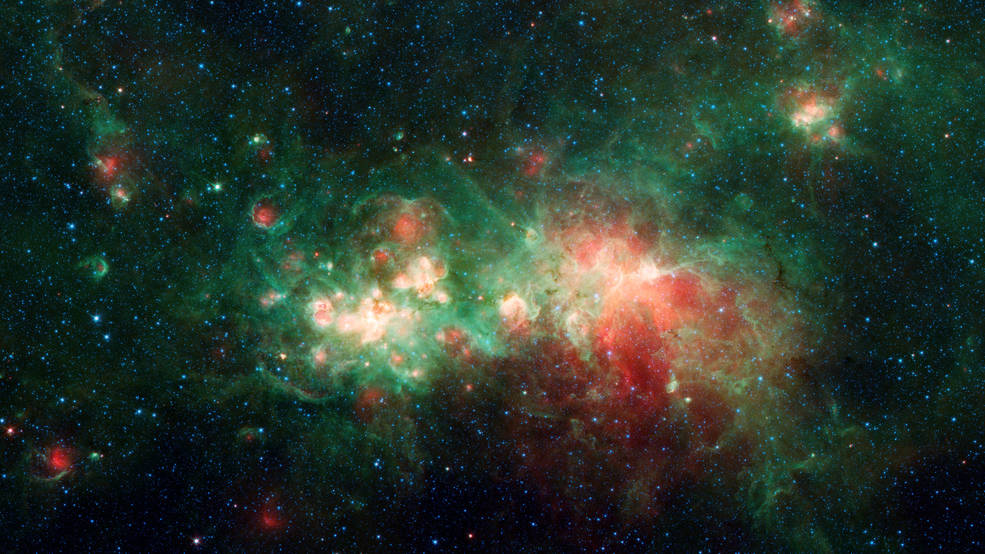|
|

|
 |
|
 |
|
|
 |
|
 |
 |
|
 |
|
| Where Are Stars Made? NASA's Spitzer Spies a Hot Spot |
The most massive stars in the universe are born inside cosmic clouds of gas and dust, where they leave behind clues about their lives for astronomers to decode. The nebula known as W51 is one of the most active star-forming regions in the Milky Way galaxy. First identified in 1958 by radio telescopes, it makes a rich cosmic tapestry in this image from NASA's recently retired Spitzer Space Telescope. Located about 17,000 light-years from Earth, in the direction of the constellation Aquila in the night sky, W51 is about 350 light-years – or about 2 quadrillion miles – across. It is almost invisible to telescopes that collect visible light (the kind human eyes detect), because that light is blocked by interstellar dust clouds that lie between W51 and Earth. But longer wavelengths of light, including radio and infrared, can pass unencumbered through the dust. When viewed in infrared by Spitzer, W51 is a spectacular sight: Its total infrared emission is the equivalent of 20 million Suns. If you could see it with your naked eye, this dense cloud of gas and dust would appear about as large as the full Moon. The Orion Nebula – another well-known star-forming region and a favorite observing target for amateur astronomers – occupies about the same size area in the sky. But W51 is actually much farther from Earth than Orion and thus much larger, and it's about 75 times more luminous. While Orion contains four known O-type stars – the most massive stars in the universe – W51 contains over 30. "Star factories" like this one can operate for millions of years. The cavernous red region on the right side of W51 is older, evident in the way it has already been carved out by winds from generations of massive stars (those at least 10 times the mass of our Sun). The dust and gas in the region are swept around even more when those stars die and explode as supernovas. On the nebula's younger left side, many stars are just beginning to clear away the gas and dust in the same way the stars in the older region have done. It's apparent that many of these young stars are in the process of forming bubbles of empty space around themselves.
The star-forming nebula W51 is one of the largest "star factories" in the Milky Way galaxy. Interstellar dust blocks the visible light emitted by the region, but it is revealed by NASA's Spitzer Space Telescope, which captures infrared light that can penetrate dust clouds. |
|
|
|
 |
|
 |
|
|
Copyright? Purple Mountain Observatory, CAS, No.10 Yuanhua Road, Qixia District, Nanjing 210023, China
Phone: 0086 25 8333 2000 Fax: 8333 2091 http://english.pmo.cas.cn |
|
|
